Olivares, the village where I worked for three years, is exactly 16 kilometers away from my old house in the Triana neighborhood. This meant a 40-minute bus ride (barring cows and tractors in the two-lane highway) or a 25-minute trip with a coworker. I soon found out that this was equivalent to 10 miles to metric system-challenged Americans like me.
And then, one day, I walked 16 kilometers. I remembered Martin, my bike-wielding Dutch workmate, who came daily on two wheels and wondered how I could have walked the distance from Triana to Olivares (and, yes, uphill in the hot Spanish sun).
Monica and I, not feeling the beach or wanting to stick around in Sevilla, hopped a Cercanias short-distance train to the town of Cazalla de la Sierra, a mountain pass away from Kike’s village. Known for its enormous cathedral, white buildings and liqueurs, it is the one of the major tourism towns in the north of the province.
As we boarded the train in Santa Justa, it became apparent that the town is heavily-touristed. Scout troops, families and bikers boarded the train, leaving hardly enough seats for those who got on at other stops along the route. The train climbed higher and higher into the Sierra Norte, the farmland rich in acorn trees that feed those delicious piggies that give us ham and caña de lomo. When it let us off 90 minutes later in Cazalla, we saw no emblematic Miura signs or that big ol’ castle. We saw wilderness.
I approached a toothless man sitting outside the train station, which had no attendant. “Which way to Cazalla?” I asked.
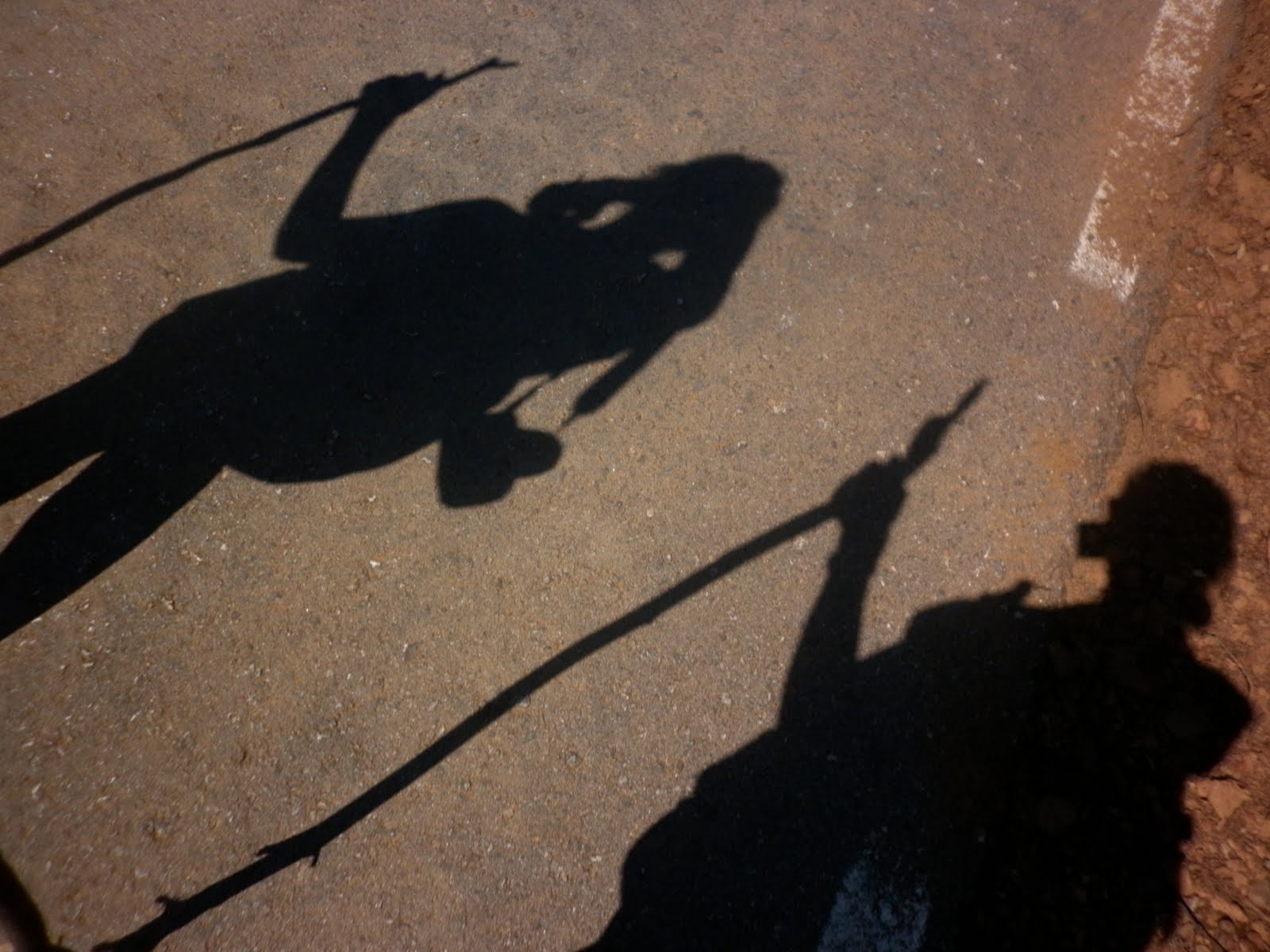
He responded in perfect English: “Where are you from?” and, despite not having teeth, said it without any trace of an accent. I had to repeat Chicago about six times, and my neoyorquina friend kept her mouth shut before he pointed to the highway and said, “Just up that road, eight kilometres. The scenic route is flooded.”
I apologized six times to Monica, who just laughed at me as we watched the bikers head down the scenic route. So, up we went, with our sturdy walking sticks, Herbert and Leonard.
Poppies were in full bloom around the fincas full of olive trees and ganadería, livestock ranging from chickens to sheep to the elusive pigs and bulls we’d seen from the train windows. We hiked. And hiked. And kept hiking as cars and bikes whizzed past us. The clear sky coupled with Kike’s army-issued backpack that carried nuts, sunscreen and a book made for sweaty hikers, but we found some shade when we reached a fork in the road. At this point, we’d seen just one house, so the crossed-out CAZALLA was a bit ominous.
“Let’s Robert Frost this,” Monica suggested when we reached a fork in the road 100 meters up. An uphill path lead us to the gate of the Cartuja monastery overlooking horse pastures and a pristine view of the surrounding valleys. I peeked inside at the crumbling brick masterpiece of ochre and cerulean blue before a woman came face to face with me.
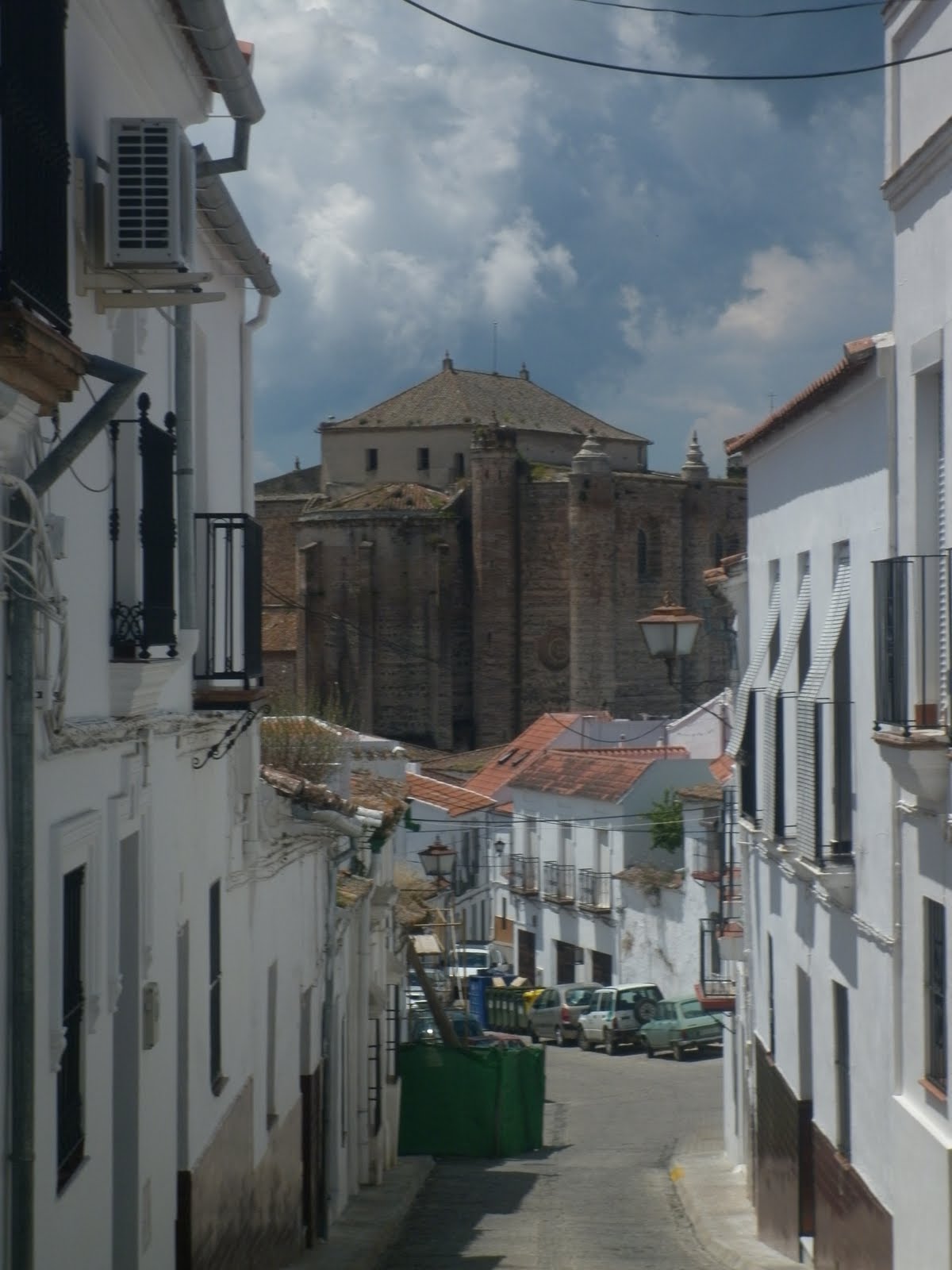 “You come for visit, or to stay the night?” she asked in crisp English. Geez, everyone here speaks my tongue! We told Mari Carmen, the supposed proprietor of the place, that we were headed into town. “Well, it’s three miles, so you better hop in the back.” She motioned to her blue van and Mon and I got in. Turns out that the cordobesa had bought the monastery over three decades ago and was lovingly restoring it. She was certainly weathered and looked like she’d dedicated 34 years to that place.
“You come for visit, or to stay the night?” she asked in crisp English. Geez, everyone here speaks my tongue! We told Mari Carmen, the supposed proprietor of the place, that we were headed into town. “Well, it’s three miles, so you better hop in the back.” She motioned to her blue van and Mon and I got in. Turns out that the cordobesa had bought the monastery over three decades ago and was lovingly restoring it. She was certainly weathered and looked like she’d dedicated 34 years to that place.
MC dropped us off at one end of the pueblo near a wholesale grocery store. Figuring our first stop should be the tourism office, we followed signs for the cathedral, passing pensioner’s homes and abandoned anís factories. The only people in the plaza were pensioners, and the tourism office, supermarkets and, um, everything were closed. A bar was the next stop.
People marveled at the two guiris in the two bars we had two beers in (yes, I prefer even numbers). We were treated to fried pig, sautéed mushrooms and nuts, free advice and a whole lot of stares. I asked numerous partons how long it would take to hike the Via Las Landeras back to the train station, the apparently flooded route. Tongues wagged when they told us it would take us about three hours and we had far less that to make it. Skeptical, I stopped at another bar and asked and was told I had the pleasure of meeting the town drunk, Rafael. He swore to be from Triana and asked where I was from.
“Chicago.”
“That’s not a real place. You’re from Carolina, then?” Si, por alli. Around there. We followed Rafael’s advice to take the main road down past the Cathedral until we got to a fountain and look for the small sign marking the start to the Via Verde, a green road established through a collaboration of the Environmental and Tourism office. What we found was a dirty and a dead-end. Now fearing we may never make it to the train station, we asked several more people before ending up at the other end of the main street.
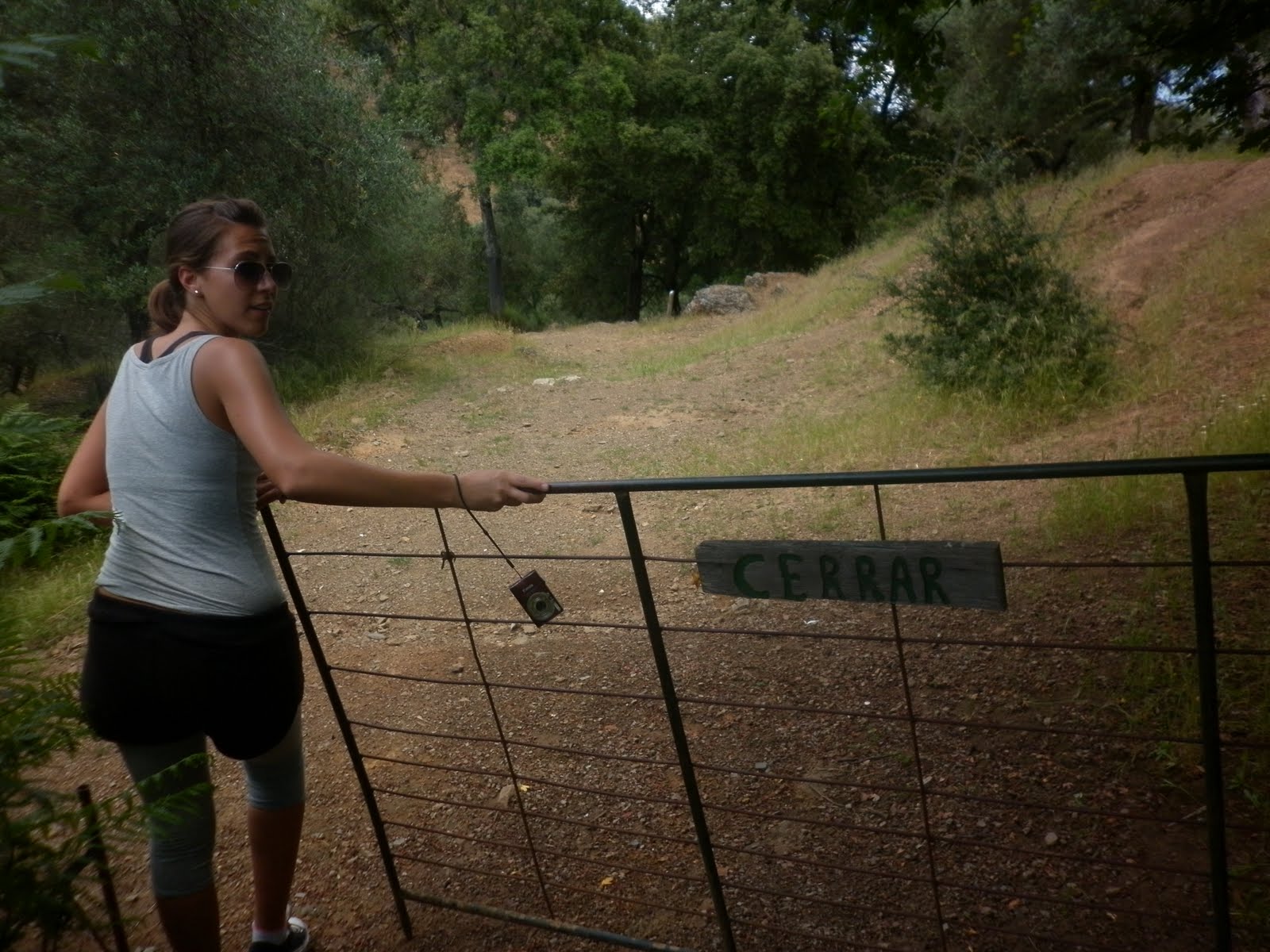 The sign marking the trail claimed the hike down would take up to three hours. Monica and I tried jogging it, which didn’t last long due to horseback riders, steep turns and the intense sun on our backs. The flat path through fields of poppies quickly gave way to craggy farmland full of sheep, slate rock rivers and clandestine fields.
The sign marking the trail claimed the hike down would take up to three hours. Monica and I tried jogging it, which didn’t last long due to horseback riders, steep turns and the intense sun on our backs. The flat path through fields of poppies quickly gave way to craggy farmland full of sheep, slate rock rivers and clandestine fields.
We made it down to the train station in just over an hour, sweating and beat. My butt hurt after the 16-kilometers. Monica’s calves quivered. It took us not even three minutes to fall asleep on the train.
I thought of Martin and realized that his 40 years looked good because, after a full 16 kilometers on his bike, he must be beat.
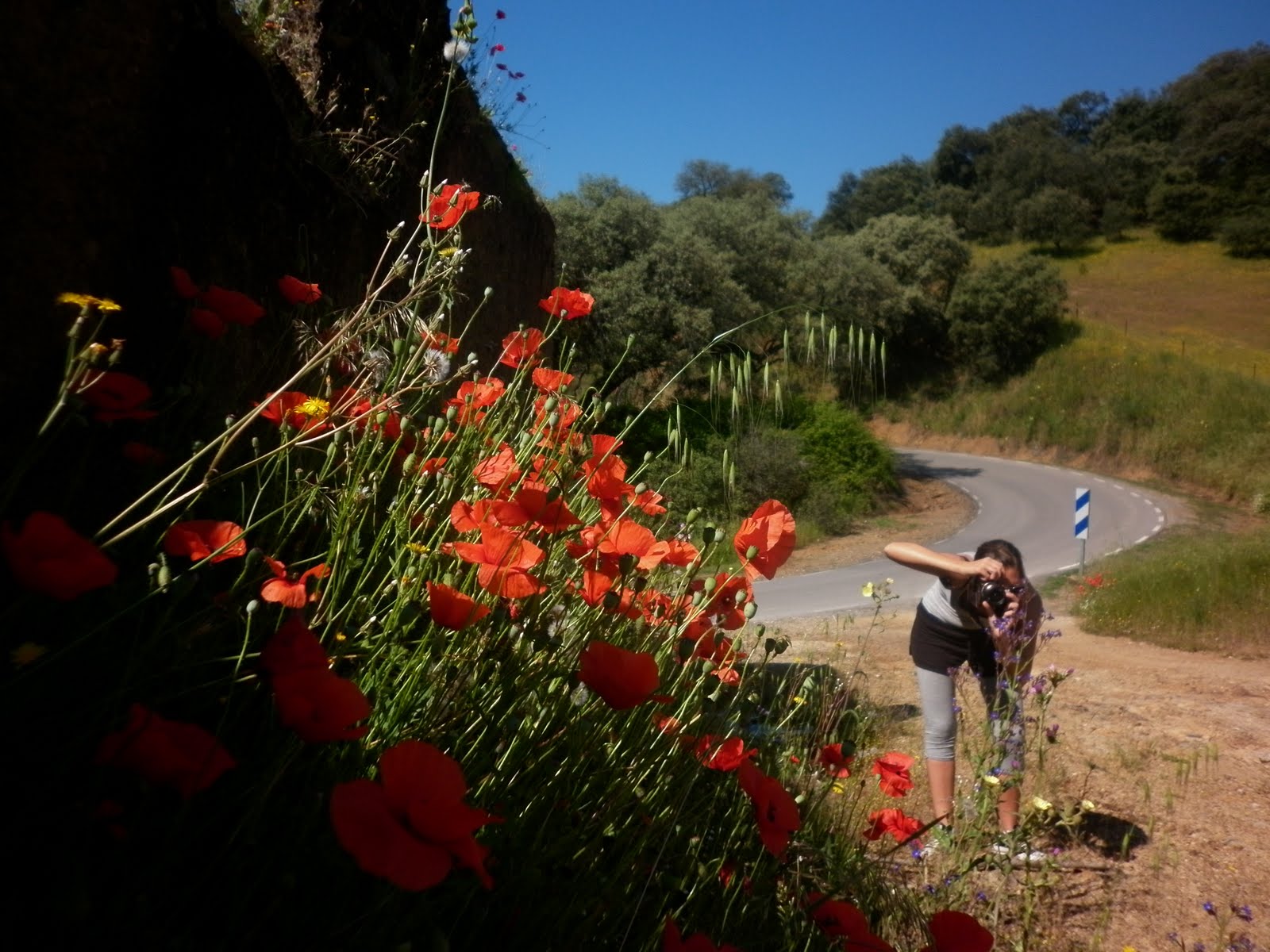
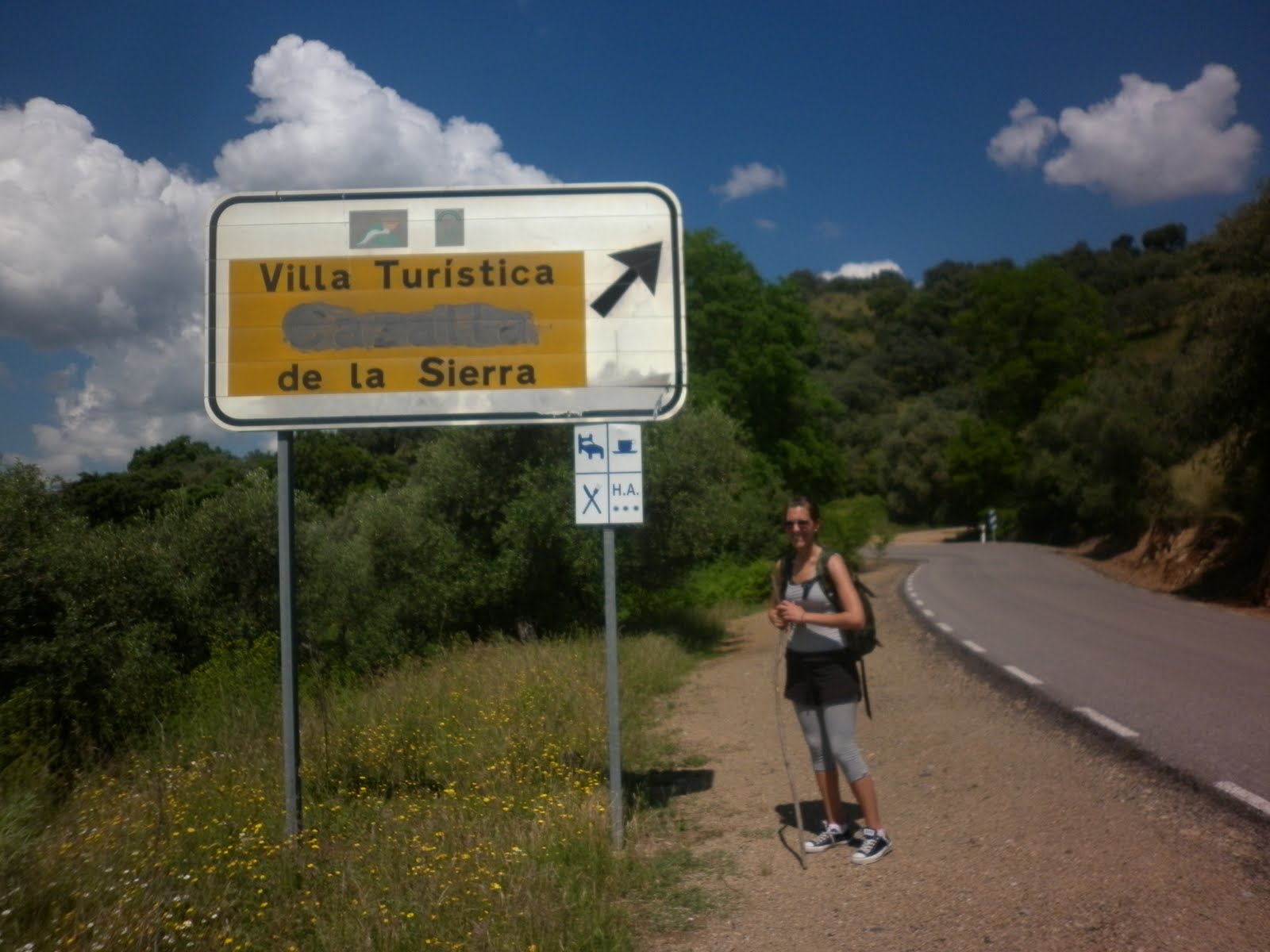
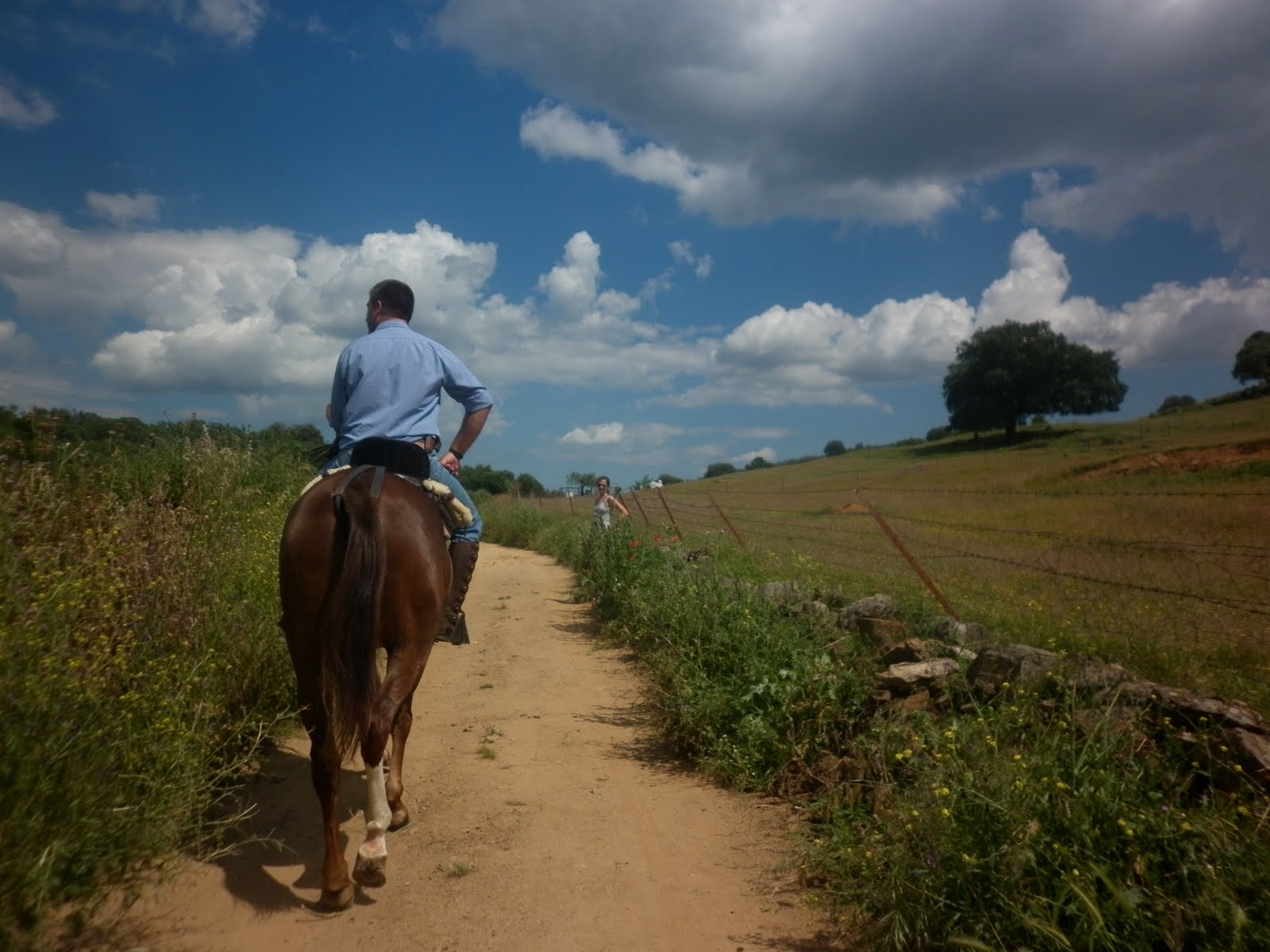





[…] a breathtaking pueblo blanco full of old men and wine cellars. Monica and I ended up here after hiking the Vía Verde last Spring, and this is where the famous anís is produced, bottled and packaged. I tend to refer to […]